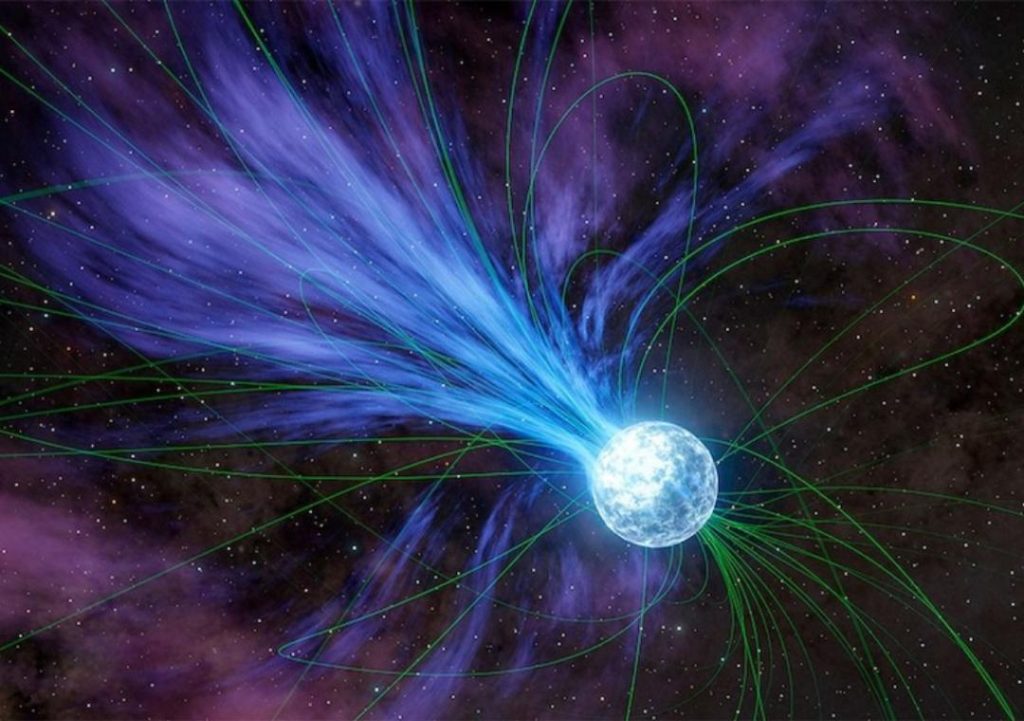
Gold & Platinum Created through Neutron Stars’ Explosions: Study
For centuries, humans have been fascinated by the origin of precious metals like gold and platinum. While we’ve long known that these metals are found on Earth, the exact process by which they were formed has remained a mystery. Recently, a groundbreaking study led by Columbia University student Anirudh Patel has shed new light on the creation of these valuable elements, and the answer lies in the explosive events of neutron stars.
Magnetars and the Cosmic Origins of Gold and Platinum
Neutron stars are incredibly dense celestial bodies formed from the remains of massive stars that have undergone a supernova explosion. These stars are so dense that a sugar-cube-sized amount of their material would weigh about the same as a mountain. One type of neutron star, known as a magnetar, is particularly noteworthy for its extremely powerful magnetic field. When a magnetar explodes, it releases a massive amount of energy in the form of flares, which contain a range of elements, including gold and platinum.
According to the study, magnetars or highly magnetized neutron stars played a crucial role in creating elements like gold and platinum in a cosmic event over 20 years ago. The explosions, which happen approximately once per decade in the Milky Way and annually across the observable universe, released these elements into space.
The Formation of Gold and Platinum
The process of forming gold and platinum is a complex one, involving the fusion of lighter elements in the intense heat and pressure of a magnetar’s explosion. The elements are forged through a series of nuclear reactions, in which the lighter elements are combined to form heavier ones. This process, known as nucleosynthesis, is thought to have occurred in the explosion of a magnetar, releasing a burst of energy that contained the newly formed elements.
Gold, in particular, is of interest to scientists, as it is a rare and valuable element that is found in small amounts on Earth. The study suggests that gold was formed through the rapid neutron capture process, also known as r-process nucleosynthesis. This process occurs when a massive star undergoes a supernova explosion, causing a burst of neutrons to be released into space. These neutrons then interact with lighter elements, such as iron and nickel, to form heavier elements like gold.
Platinum, on the other hand, is thought to have been formed through the slow neutron capture process, or s-process. This process occurs when a star undergoes a series of nuclear reactions, gradually adding neutrons to the atomic nuclei of lighter elements to form heavier ones.
The Implications of the Study
The discovery of gold and platinum in magnetar explosions has significant implications for our understanding of the origins of these precious metals. For centuries, humans have been fascinated by the allure of gold and platinum, using them to adorn ourselves, trade, and accumulate wealth. The study suggests that these metals were not always abundant on Earth, but were instead forged in the intense heat and pressure of a magnetar’s explosion.
The study also highlights the importance of neutron stars and magnetars in the formation of elements. These celestial bodies are thought to be responsible for creating many of the heavy elements found in the universe, including gold, platinum, and other precious metals.
Conclusion
The study led by Anirudh Patel has shed new light on the origins of gold and platinum, revealing that these precious metals were forged in the explosive events of neutron stars. The discovery of these elements in magnetar explosions highlights the importance of these celestial bodies in the formation of the elements that make up our universe. As scientists continue to study the mysteries of the cosmos, we may uncover even more surprising revelations about the origins of the elements that surround us.
Source:






